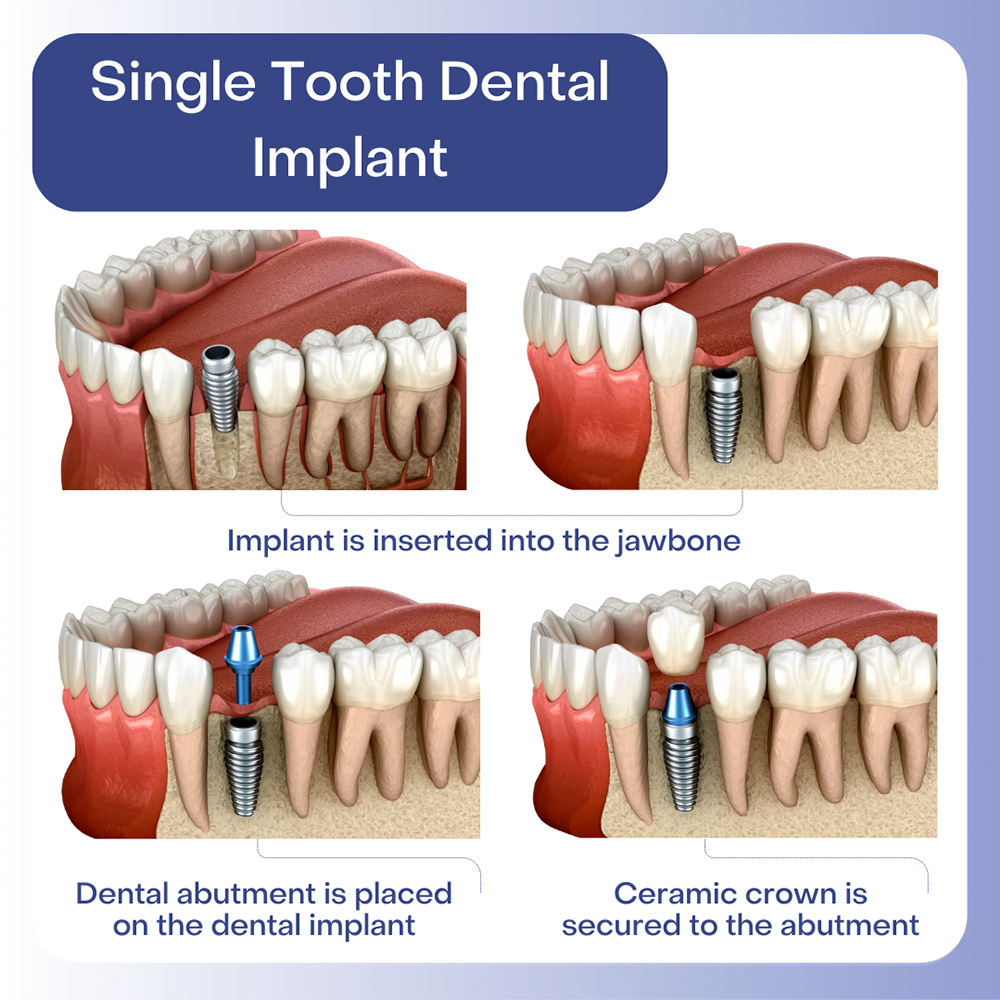Getting The Dental Sense To Work
How Dental Sense can Save You Time, Stress, and Money.
Table of ContentsFascination About Dental SenseThe 3-Minute Rule for Dental SenseIndicators on Dental Sense You Should KnowThe Buzz on Dental Sense
are medical gadgets operatively dental implanted into the jaw to recover an individual's capacity to eat or their look. They supply assistance for fabricated (phony) teeth, such as crowns, bridges, or dentures. When a tooth is lost as a result of injury or condition, an individual can experience complications such as quick bone loss, malfunctioning speech, or changes to chewing patterns that cause pain.Dental implant systems contain a dental implant body and oral implant abutment and may also consist of an abutment addiction screw. Dental implant vs bridge. The dental implant body is surgically placed in the jawbone in place of the tooth's root. The oral implant joint is usually affixed to the dental implant body by the joint fixation screw and extends through gum tissues into the mouth to support the affixed artificial teeth
(https://padlet.com/matthewmusic33101/dental-sense-ljnep063jjnbcvdg)Framework of The Oral Implant System choosing oral implants, talk with your dental provider concerning the possible advantages and threats, and whether you are a prospect for the treatment. Points to think about: Your general wellness is a crucial consider identifying whether you are a great prospect for oral implants, the length of time it will certainly take to recover, and just how long the implant might remain in area.
Smoking may impact the healing process and lower the lasting success of the implant. The healing process for the dental implant body might take numerous months or longer, during which time you usually have a momentary joint in location of the tooth. the dental implant treatment: Meticulously adhere to the dental hygiene directions provided to you by your dental provider.
Getting The Dental Sense To Work
Implant failure can lead to the demand for one more surgery to repair or replace the dental implant system. Brings back the capacity to eat Recovers cosmetic appearance Helps maintain the jawbone from diminishing because of bone loss Protects the health of the bordering bone and gums Assists maintain surrounding (close-by) teeth stable Enhances lifestyle Damages to bordering natural teeth throughout dental implant placement Injury to the surrounding cells throughout surgery, such as sinus opening Injury throughout surgical procedure (as an example, fracture of bordering jawbone) Inadequate function, such as seeming like the teeth do not attack together typically An experience that the tooth hangs or twisting in position arising from a joint screw loosening up Implant body failure (looseness of the implant body) because of systemic infection, which may be extra most likely in patients with uncontrolled diabetics issues as a result of regional infection in bone and gums sustaining the dental implant body as a result of postponed healing, which may be a lot more likely in patients who smoke Problem cleansing the gum tissues around the implant, causing bad dental health Neglected gum illness Post-surgical numbness because of nerve impingement or damage Always inform wellness care carriers and imaging technicians that you have oral implants prior to any kind of magnetic resonance imaging (MRI) or x-ray procedures.
FDA is not familiar with any kind of adverse occasions reported for MRI or x-ray procedures with oral implants. Dental implants systems are typically made of materials that comply with international consensus requirements of the International Organization for Standardization (ISO) or ASTM International. These requirements have information of what makes a safe material.

A dental implant is a structure that changes a missing tooth. With screw-like tools, the specialist inserts a dental implant into the jawbone, and it acts as a support for an artificial tooth, called a crown.
6 Easy Facts About Dental Sense Described
Some people are not qualified for oral implant surgery. It is additional resources for oral specialists to operate on people with: acute illnessuncontrollable metabolic diseasebone or soft cells disease or infectionIf these issues are fixed, an individual can have the surgery. In, dental specialists avoid from operating people with: If individuals with any one of the above go through dental implant surgical procedure, there is a greater threat of the implant falling short.

Dental implant surgery is an individualized process. It's not the very same for everyone. However the following provides a general introduction of what you can anticipate your dental professional, dental surgeon, periodontist or prosthodontist to do: Position the dental implant surgically. Offer you time to heal. Attach the article and last crown, bridge or denture.
Next, your doctor will very carefully put the dental implant into your jaw. Finally, your surgeon will reposition your gum tissues and shut the laceration with stitches. If your implant is near the front of your mouth, your dental professional will make a momentary tooth for you to use until you heal. In this way, you won't have a space in your smile while you recuperate.
Our Dental Sense PDFs
Throughout the recovery stage, your jawbone ought to fuse to the oral implant. This procedure can take anywhere from 3 to nine months.
When your dental implant heals, your dentist can attach the abutment (small port post) and your final repair (crown, bridge or denture). This generally takes about one hour to finish and may need a 2nd small surgery. You should not feel any discomfort throughout your oral implant treatment since your service provider will make use of medicine to numb your periodontals.